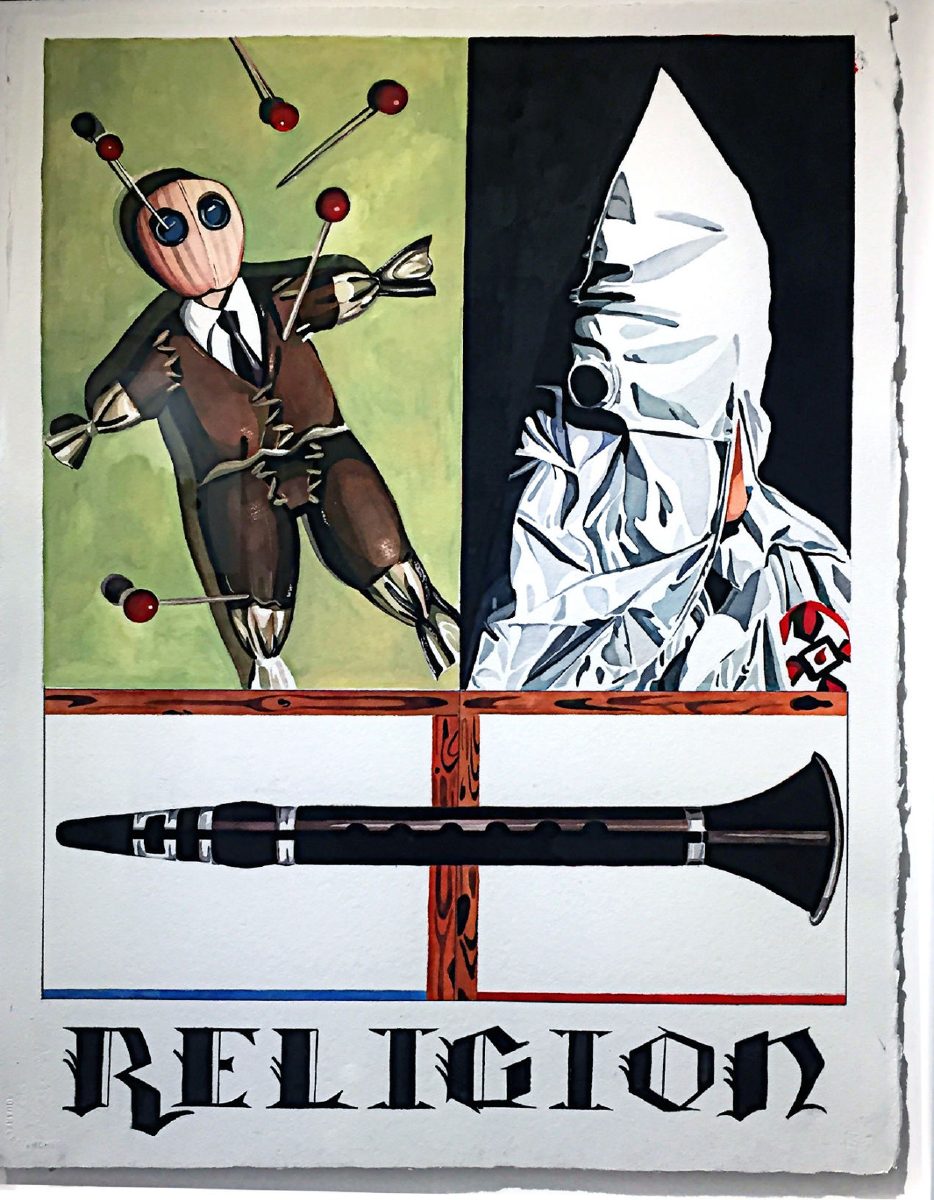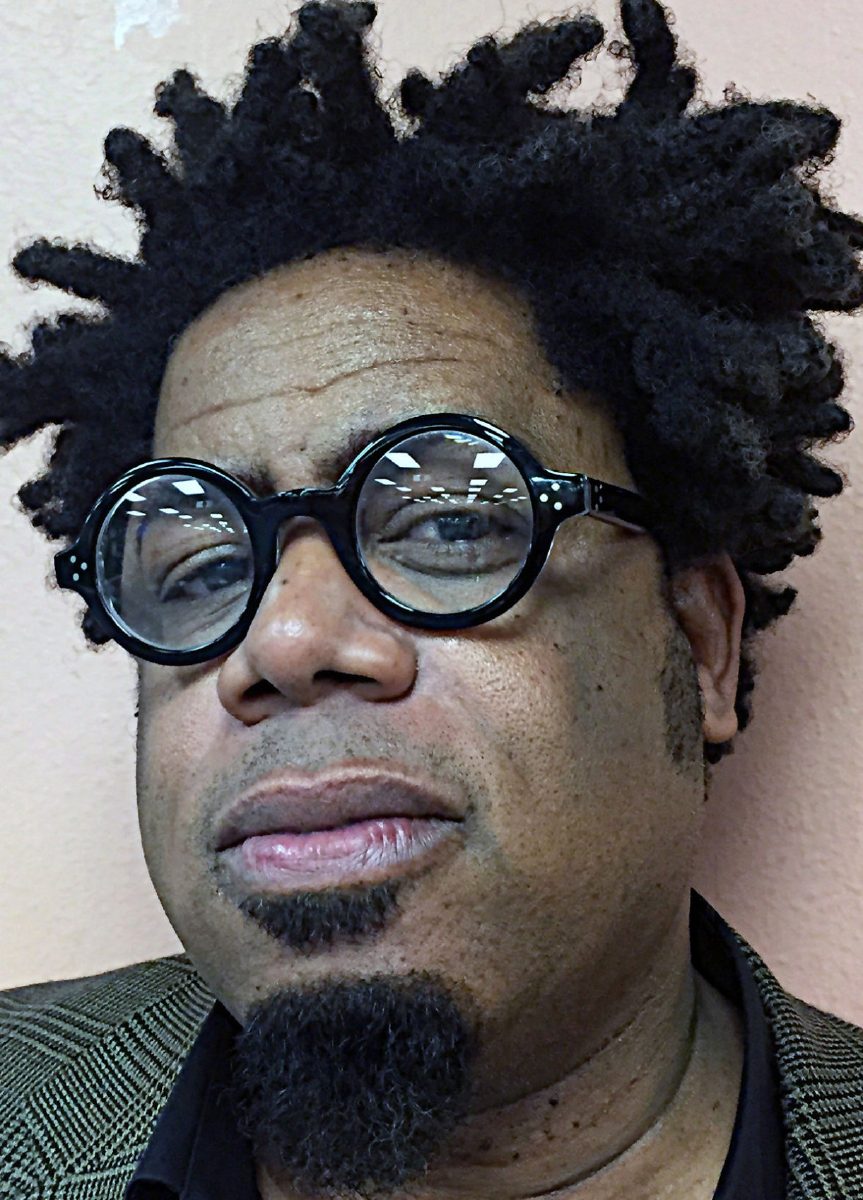BY NANCY MOYER
Houston artist, David McGee, believes in the creative perception. His emotional response to objects or situations determines the medium he will use to express the ever-important feeling evoked by his subject.
“David McGee: New Work,” on view in the upstairs gallery in the South Texas College Library, pulls paintings from three different series: the black and white mixed-medium urban abstractions, the oil-on-canvas literary inspirations and the artist’s watercolor responses to people and places while traveling. McGee doesn’t pledge allegiance to any particular style of art even though galleries and collectors embrace stylistic devotion. It is not the route for this artist. Rather than adhering to a stylistic allegiance, these paintings are meant to carry the emotional weight of what it means to be human without the restraint of artistic habit.
“The funny thing about the culture we live in right now,” commented McGee, “once you get good at something and make money at it, people in power want you to continue doing that thing. And you continue making that thing until you reach the age of whatever you are, and it’s too late to turn back. You’ve painted yourself into a corner.”
McGee consciously avoids that corner.
His urban abstractions have been described as “urban dread” with their geometric and achromatic sense of detachment. Yet they possess a rich tactile quality that puts the viewer in touch with the feeling of a rough dehumanized environment. Inspired by city grids and created with gravel mixed with glues and pigments to evoke the city landscape, McGee wanted the surfaces of these paintings to have the feeling of urban walls. He also wanted them to feel congested.
Elsewhere, a group of large canvases border on abstraction, embrace color, and are layered with heavy, emotional, gestural brushwork and scraping. Expressing emotions encountered by the artist from water-themed literature, these works express feelings and perceptions related to experiences at sea.
Some reference “Moby Dick”, where McGee conveys the sense of the speed of water action as the fictional adversaries battled. Scraping upon the multiple layers of paint, McGee shows us the feeling of the whales battered skin.
“His skin in the novel is described as scraped and bleeding,” McGee said. “I wanted to make whale skin.”
In the painting, “Devil’s Wind,” the fight was so extreme that the blood whipped through the air. “And I could see that,” added McGee. He reminds us that painting allows us to participate in whatever situation has wired the curiosity of the painter. The watercolors take a sharp turn away from these other works, displaying virtuosity through drawing skills and the transparent medium. These works document the artist’s responses as he blended his personal knowledge with freshly viewed images.
“Da Vinci” features a sharp figurative portrait of an African-American pop-culture star fused with the image of someone who was historically comparable in 16th century Italy. “Religion” is an unsettling impression of New Orleans.
“Artists can rewrite and reshape how we look at the world,” professed McGee, strongly aware of the artist’s role in society.
He recalls that people were illiterate in early Christian times and used painting as a way to transport themselves to a living god.
“Painting is a medium that if you give yourself to it, you will be transported,” he continued. “But you have to suspend the belief that something that is colored dirt and canvas can transport you.”
Nancy Moyer, Professor Emerita of Art at the University of Texas Rio Grande Valley, is an art critic for The Monitor. She may be reached at [email protected].
“David McGee: New Work”
Where: STC Library Art Galleries, Bldg F, 3201 W Pecan Blvd
When: Through April 25
Hours: 7 a.m. to 9:30 p.m. Monday to Thursday; 8 a.m. to 7 p.m. Friday
Contact: (956) 872-3488












